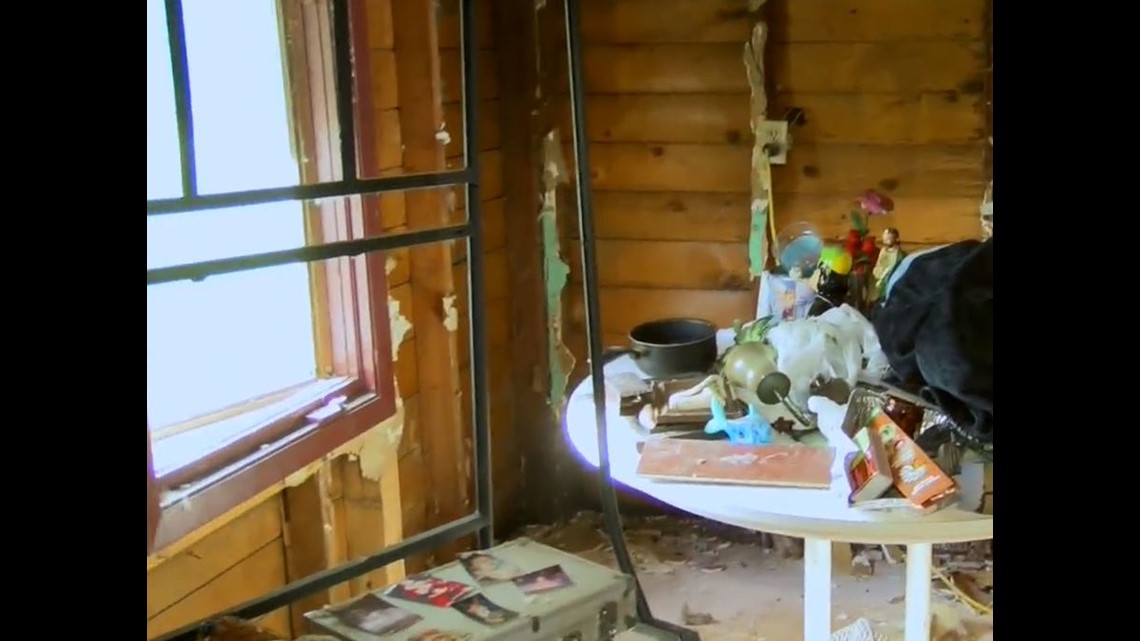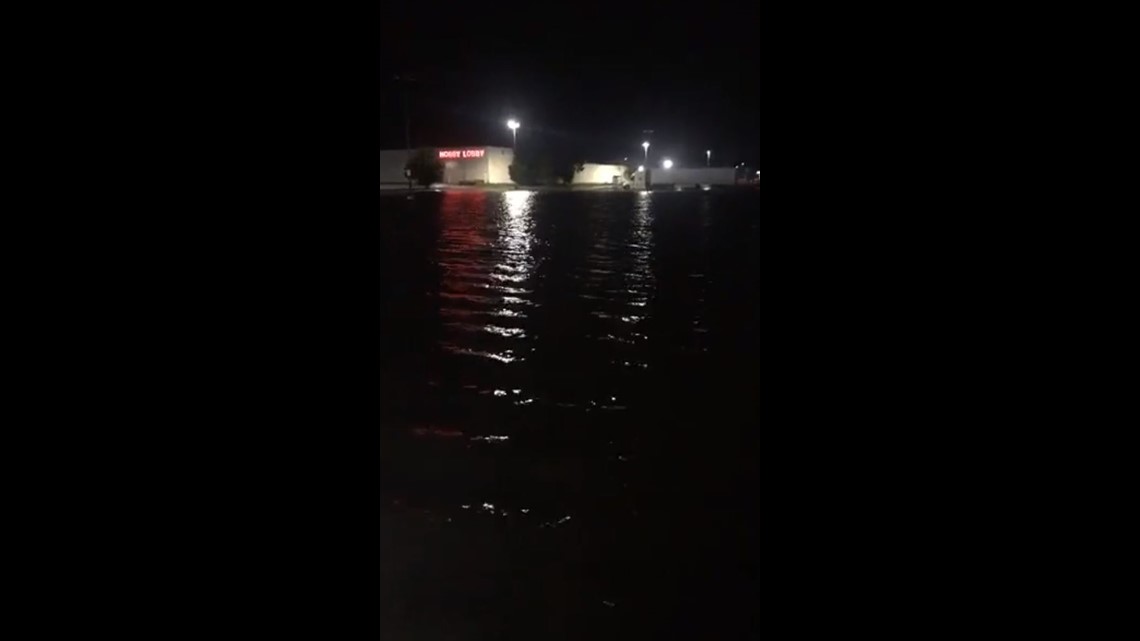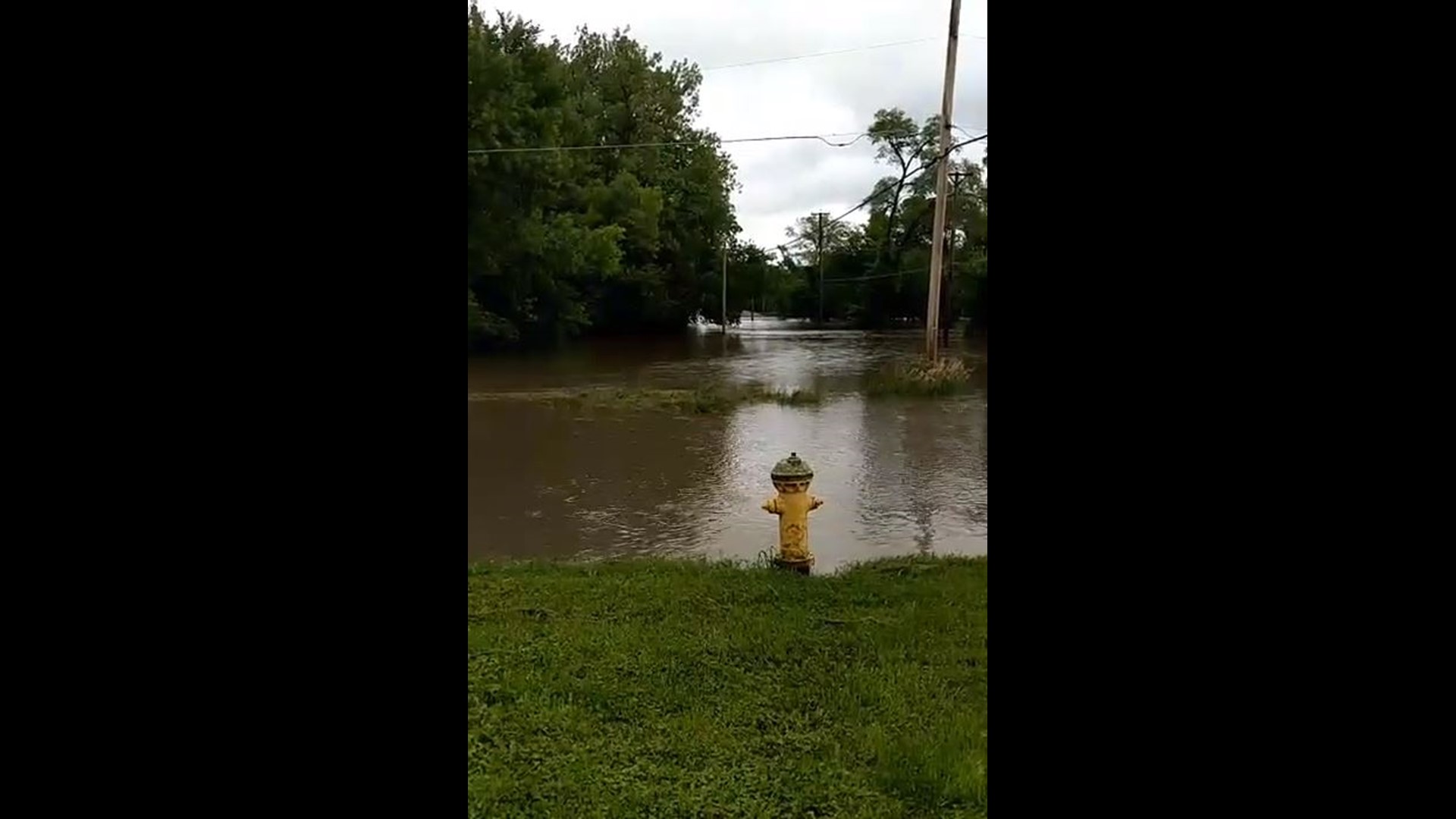IOWA, USA — NOTE: "Floods of 2018: Lessons Learned" originally aired on June 30, 2019.
On the night of June 30, 2018, severe flash flooding hit central Iowa. While heavy rain was expected, no one anticipated a flood event that would totally reshape many metro communities.
A cluster of strong thunderstorms moved into the metro after a warm and humid day across the state. The storms did not have much general movement with them, and they wound up staying on top of the Des Moines metro area for several hours.
The storms began shortly after dinnertime, but when the rain continued to fall, central Iowans knew things could get bad in a hurry.
The rainfall fell at a rapid pace—two inches per hour in some cases—with many communities receiving nearly a foot of rain.
Entire roadways, neighborhoods and yards were totally submerged in water. Cities like Ankeny, Pleasant Hill, Des Moines, Urbandale, and Clive were struggling to stay above water. Homeowners became stranded while others found themselves unable to get home.
The flooding event claimed one life and ruined the lives and property for so many others.
One year later, the people of central Iowa are reflecting on what happened and the cleanup process. City leaders are now looking ahead to see how something like this can either be mitigated or altogether prevented in the future.
“We’re always gonna have it in the back of our head”: Homes flooded, families uprooted and neighborhoods changed forever


Yolanda Rubio’s home on the northeast side of Des Moines quickly filled with water in the summer of 2018. The bedroom her daughters shared left barren after more than seven inches of rain fell across many parts of the metro.
A local church agreed to help Rubio’s family rebuild in August 2018, but a year later, knowing the extensive damage her home suffered will be hard to forget.


“We’re always gonna have it in the back of our head, this is what happened in ’18,” Rubio says. “But we need to get it out of our heads so we can move forward and see what better things we can do in the future.”
Property buyouts in Clive and Des Moines (approved by Polk County) helped some return to a state of normalcy.
Waters turn deadly, claiming the life of a local broadcasting legend
Larry Cotlar loved the Drake Bulldogs. He loved his family. And he loved everything that made Iowa a great place to work and live.
Cotlar was the voice of the Drake University men’s basketball team for over a decade, as well as a broadcaster for the Iowa Barnstormers.
The night of June 30, 2018 that Cotlar and his wife Deb were coming home from a Des Moines Menace game. The impending weather forced the Cotlars to drive home before waters began to fill some of Des Moines’ major roads.
“Every street was blocked,” Deb Cotlar said in an interview with Lou Sipolt. “The water caught the car. Little did we know, it ended up sweeping the car over a curb.”


Deb Cotlar survived. Larry didn’t.
Friends and family both near and far remembered Larry for the man he was: Kind, compassionate and dedicated to all things Iowa.
“Larry gave his time, talent and passion to worthy causes which continue to enhance and educate the lives of Iowans,” Gov. Kim Reynolds said on February 20, declaring it “Larry Cotlar Day”.
Cotlar’s work extended well beyond the microphone. He spent his time with the Zero Prostate Cancer fundraiser, Easter Seals Iowa, Kiwanis Miracle League and the Lupus Foundation of American (Iowa Chapter).
Larry Cotlar was 66 years old.
“We take the blame”: A contentious encounter with residents spurs City Council to act
Bill Gray, a City of Des Moines Councilman for Ward 1, visited a neighborhood near Merle Hay Mall in the days following the flooding.
What he heard was citizens demanding their elected officials step up.
“We had a poor response to what appears to be an underestimated amount of damage,” Councilman Gray said at the time.
With large items from inside homes stacked alongside curbs and storm drains causing constant problems, the city needed to act quickly.
The solution? A one-cent increase to the sales tax in Polk County—half of the money going to lower property taxes, the other half going to upgrading infrastructure.
“I think we did the right thing putting it on the ballot,” Councilman Gray says now. “We’re not going to take this and put this money into a slush fund where we are going to take from it whenever we want to. If we would have said that, we wouldn’t be here today. The first 50 percent to property tax relief. Then we said infrastructure and roads. Infrastructure means sewers. That caught peoples’ attention a lot. And if they can see an immediate benefit from being done by increasing my sales tax by a penny. It’s well worth it.”
The city is expected to build a water retention basin near 41st Street and College Avenue, as well as build a larger sewer line to make the Maquoketa Drive drain bigger. That would push water to a ravine where it can safely pass through.
Invasive, but effective: Engineers create underground plan to prevent flooded homes
Some intersections in Des Moines fill up with water quicker than others, meaning water then moves into the basements of residents. While many houses were eligible for buyouts, the extensive water damage seen across the city mean its engineers had their work cut out for them.
“It just keeps going until you’ve got eight feet of water up to the rafters,” said City of Des Moines Public Works Director Jonathan Gano.
A year after the floods of 2018, concrete boxes are being constructed to be buried underneath streets. The boxes will help the water wait for storm sewers to catch up.
See 38th Street and Amick Avenue, where water came through a ravine, smashed the embankment and caved into the creek bed below.
On 35th Street and Urbandale Avenue, a lot where homes once stood is now empty due to a storm drain pipe failing. The city bought two homes on the property and tore them down.
“This approach is sometimes the cheapest way to solve the problem,” Gano says.
The area surrounding Fourmile Creek was hit the hardest, with 100 homes deemed eligible for a buyout. 80 families accepted.
Fourmile Creek at Easton Boulevard crested at 17.47 feet the morning of July 1, previous the previous record of 16.14 feet in August 2010.
“A historic event”: Polk County Emergency Management’s efforts to keep communities safe
Polk County Emergency Management Director A.J. Mumm learned a lot from the 2018 floods.
As they dealt with rising waters and imploding homes, they were also monitoring other water levels. A CODE RED was also triggered in the automated emergency notification system, which is used for mass communication during emergencies in a short amount of time.
Polk County Emergency Management says CODE RED is able to make 1,200 phone calls per minute.
Several spots were in imminent danger and that meant quickly and accurately sharing information became critical.
Mumm called a press conference on Sunday morning (July 1) with first responders and local leaders all in attendance to separate fact from fiction.
“Obviously a historic event in terms of sheer rainfall, and we definitely don’t say that lightly,” Mumm said during that July 1 press conference.
A year later, Mumm says the county’s hazard mitigation plan has been updated, engineers have been consulted and other plans implemented. He says of the tens of thousands of properties that were impacted, very few were actually in a flood plain. Moving forward, he thinks it’s best to be proactive in protecting what matters most.
“Some steps you can take now on a nice day to inventory your property and make sure you have adequate insurance,” Mumm says. “I think that was an enormous myth that, ‘Oh, I can’t get flood insurance because I live in a flood plain’, and that’s just that. They’re myths.”
But, like many things, a complete rebuild to what was lost during the floods of 2018 is a practice in patience.
“This is going to be measured in years, not weeks and months, but I think overall, our community has learned a lot,” Mumm says. “We’ve been prepared, and I think we’re going to be even more prepared tomorrow.”
PHOTOS: What areas hit by 2018 floods look like now
13th Street and Jefferson Avenue in Des Moines
Merle Hay Mall (Sears parking lot)
Clive Greenbelt Trail


